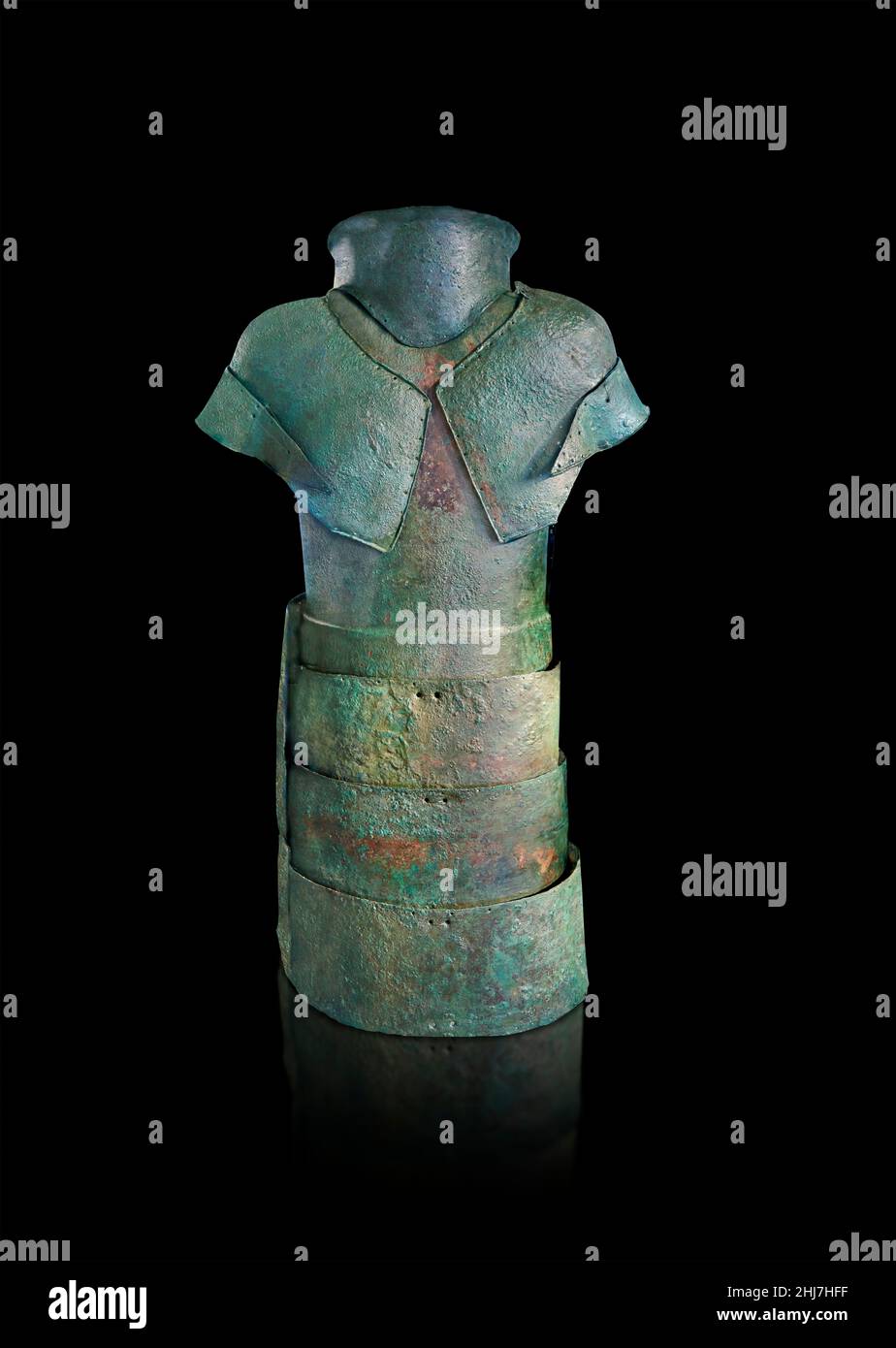Mycenaean suit of bronze amour, The Armor of Dendra, from the "Tomb of Armor" Mycenaean cemetery of Dendra, 1500 to 1180 BC . Nafplion Archaeological

Image details
Contributor:
funkyfood London - Paul Williams / Alamy Stock PhotoImage ID:
2HJ7HFFFile size:
203.5 MB (4.1 MB Compressed download)Releases:
Model - no | Property - noDo I need a release?Dimensions:
7112 x 10000 px | 60.2 x 84.7 cm | 23.7 x 33.3 inches | 300dpiDate taken:
9 March 2023Location:
Napflion Archaeological Museum. GreeceMore information:
Mycenaean suit of bronze amour, The Armor of Dendra, from the "Tomb of Armor" Mycenaean cemetery of Dendra, 1500 to 1180 BC . Nafplion Archaeological Museum. In 1960, the famous "Tomb of Armor", was investigated by N. Verdelis and two other chambered tombs were investigated by the Swedish archaeologist P. Åström. The excavation yielded many important discoveries such as jewellery, gems, weapons, tools and utensils of gold, silver, copper, alabaster glass, ivory, faience and semi-precious stones, as well as interesting pieces of pottery and figurines. However, the famous armour is the most interesting of these. The cemetery of Dendra is one of the richest Mycenaean cemeteries Peloponnese. it was in continuous use from 1500 to 1180 BC Mycenaean archaeological finds suggest that both hunting and warfare played a crucial role in the symbolic representations of the Mycenaean Elites, Bronze armour was especially associated with chariot warfare. Chariot solders heavily armoured are an expensive form of combat and could only be afforded by the wealthiest Elites. The role of armoured Mycenaean charioteers was though probably limited due to the weight considerations and probably played as psychological boosters in battle to the foot soldiers by riding up and down the Mycenaean lines. The Mycenaean suit of armour in this photo shows rings of bronze amor which are bound together through small holes on the edge of each concentric ring. The head would have been protected by a boars tusk helmet. The Mycenaeans were a Bronze Age Culture found primarily in mainland Greece in city states such as Thebes, Mycenae and Tiryns. The Mycenaean civilisation spanned the period from approximately 1750 to 1050 BC and ended abruptly during the collapse of Bronze Age culture in the eastern Mediterranean, to be followed by the so-called Greek Dark Ages. . Against black background. Photographer Paul E Williams.